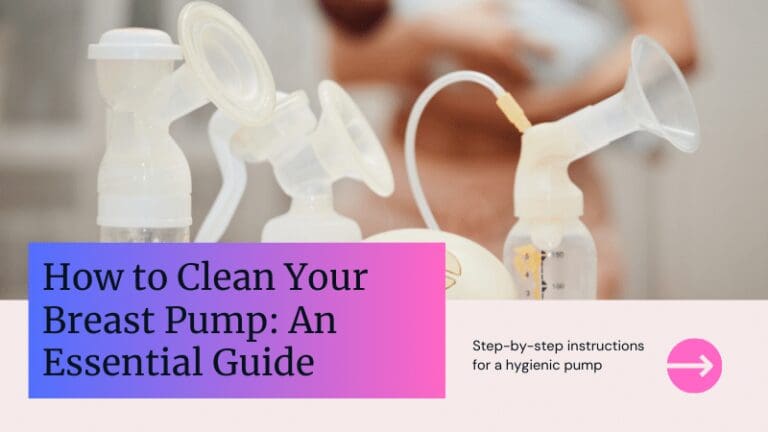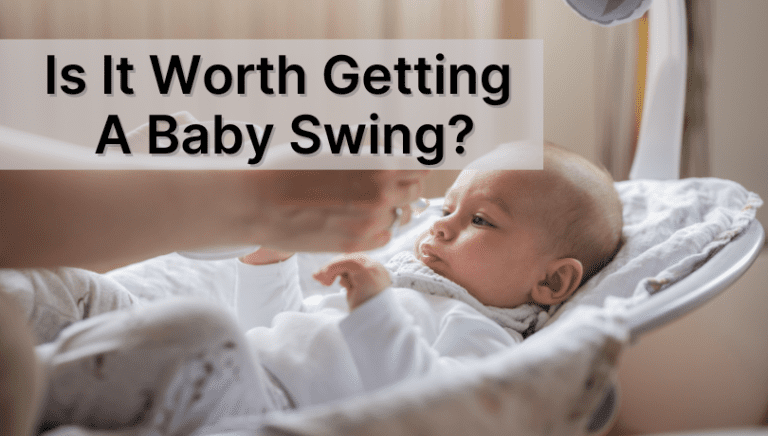How Often to Replace Baby Bottles: Mistakes to Avoid
Baby bottles tend to lose their quality over time, and we can only maintain them so well, don’t you think? My baby Theo has also dropped his baby bottles (I say dropped, but sometimes, thrown is the better word) a few times, and once, that dented the bottle a little.
And you never want to use bottles that have cracks, dents, or serious discolorations.
So, let’s talk a little bit about how often to replace baby bottles, what are the risks of using deteriorating bottles, and how you can smoothly transition to using sippy cups with time.
Table of Contents
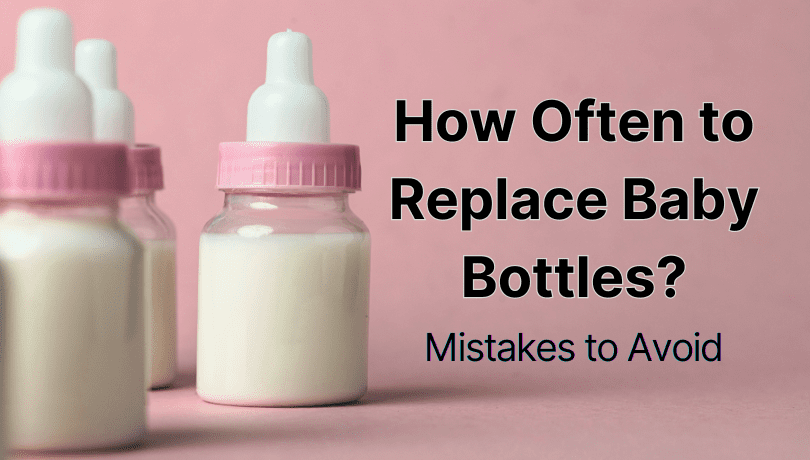
How Often to Replace Baby Bottles
We, as parents, do our best to keep baby bottles washed and sterilized to use for the long run. But bottles (be it plastic or glass), are prone to damage or any wear and tear. If your baby is teething, make sure you pay close attention to the nipple portion too, and replace it routinely.
And so, it is recommended that baby bottles should be replaced every 6 months. Only then, they will not harm your child, especially the plastic ones.
If you’ve got bottles you no longer need, and are still in decent condition, consider donating the baby bottles to organizations in your area.
When to Replace Baby Bottles: Damage Signs
There’s no harm in being extra cautious for our little ones. I keep myself on my toes to check on Theo’s health and baby feeding equipment too.
So, if you see any of these warning signs in your baby bottles, stop using them and discard them responsibly, please!

- Discoloration: Once the color of the bottle starts fading, take it as a signal that the bottle needs replacement.
- Fast Stream: While feeding your child, if the milk pours out too fast or comes out in large quantities, then it is time to change the nipple right away.
- Changes in Shape: If the nipple starts changing its shape and milk starts spilling differently than before, you must change the bottle immediately.
- Cracks and Dents: If you see cracks and dents anywhere on the bottle, please switch them out for new ones as soon as you can.
- Stickiness: Nipples tend to get sticky when they start deteriorating. Check on the nipple regularly.
As far as plastic bottles are concerned, they require regular replacement and checks too. Glass bottles, on the other hand, last longer, but you do have to be careful with those.
Recommended Reading: Glass Baby Bottles vs Plastic
What Happens When You Continue Using Damaged Baby Bottles?
- Cracked nipples or bottles are directly exposed to germs and bacteria that can affect your child’s health.
- Using half-broken baby bottles can even cause choking hazards for the baby.
- Nipple damage can cause an overflow or underflow of milk during feeding. While underflow can be frustrating, overflow of milk from the nipple can cause your baby to gag and cough excessively.
- Using damaged baby bottles can also cause colic and indigestion.
- The prolonged use of old bottles can also increase the risk of tooth decay, cause poor digestion, and more.
So, let’s not wait for things to get this bad before thinking of replacing baby bottles. Remember: get new ones if your current baby bottles have expired or are damaged. Beyond that, please replace your baby bottles every six months.
Tips to Maintain Baby Bottles
Since the bottles are used regularly and many times in a day, it is important to maintain them well. Only then will they stay durable and be safe for your baby.
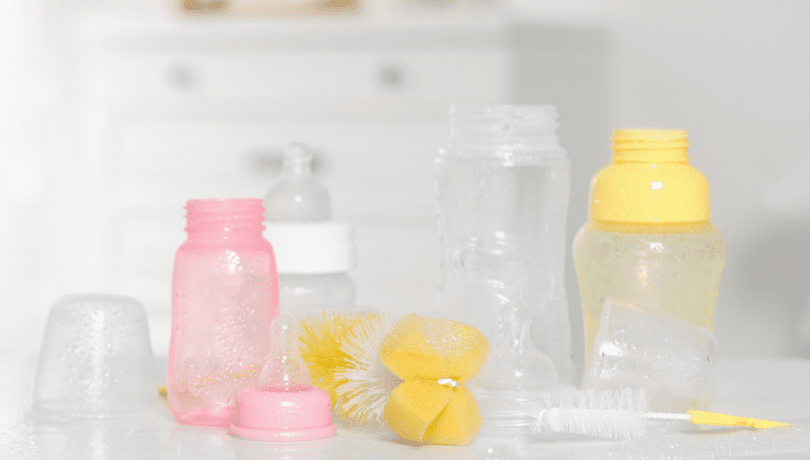
Here’s a quick overview of how I wash and maintain baby bottles:
- Wash: I hand-wash Theo’s baby bottles with mild soap, immediately after use. I only rarely place them in the dishwasher.
- Sterilization: After washing and rinsing, I sterilize them using boiling water. But you can also use an electric sterilizer or chemical sanitizer.
- Air Dry and Neat Storage: Parents, after sterilization, make sure that you air dry the bottles well and store them in a safe place. I store my child’s bottles in sealed bags or airtight containers.
Also, a piece of motherly advice – do not be too harsh with bottle cleaning. And do not try microwaving to sterilize them, either. This might leave hotspots that are harmful to children.
Further Reading: The Best Way to Clean Baby Bottles
Transitioning to Sippy Cups: Bye-Bye Bottles!
Isn’t it exciting to watch our little ones achieving developmental milestones? They start from breast milk, slowly get used to bottle feeding, and soon (at the toddler phase), they reach the sippy cup milestone.
Experts recommend that when your baby becomes a toddler, they can be introduced to their first sippy cups!
Don’t bottle-feed your children for too long or neglect transitioning to sippy cups because that has long-term disadvantages.
- Children tend to skip meals and struggle to gain weight if they become addicted to their feeding bottles. Similarly, as time starts to fly, it becomes harder for them to adapt to the sippy cups and beyond.
Choosing The Right Cup
- Choose a cup with no valve because those small parts can be difficult to wash and replace.
- Get a sippy cup with handles on each side for better grip.
- Always look for a cup with a weighted base. This will minimize spills.
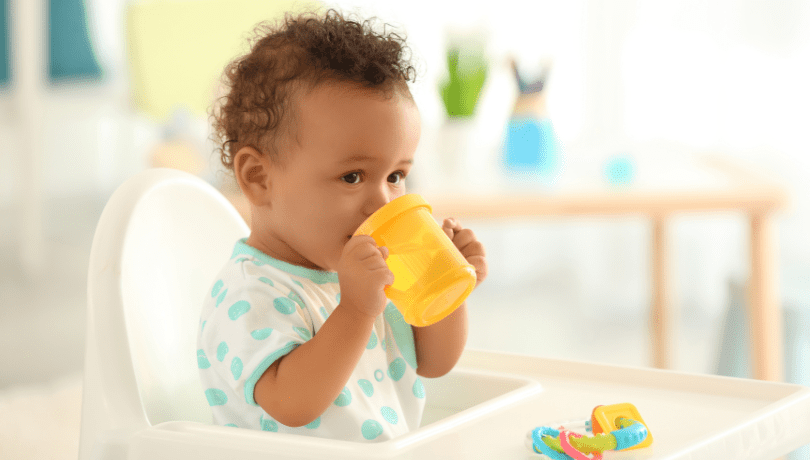
A friend of mine, who is a mother to a toddler, said:
“I made a huge mistake by buying a normal cup with a straw. My child just chewed on the straw most of the time! Then, I switched to a sippy cup and now, he loves to drink milk in his sippy cup. But it did take time. It was not easy to leave the bottles. The process is messy, full of spills, but worth it”.
What to Look For When Replacing Baby Bottles
1. Material
- Baby bottles come in different shapes, sizes, and materials. You can choose from either plastic, glass, or silicone bottles.
- The plastic bottles are super affordable (get the BPA-free ones). My personal favorite is the Philips Avent Natural Response Baby Bottle.
- I also keep a few glass bottles on standby if all my plastic bottles need a thorough wash. So, please choose based on your needs.
- It’s also worth looking into the baby bottle’s nipple sizes to find the best fit and material. This is another way to ensure your baby is comfortable with the bottle.
2. Anti Colic
- This is the best feature of today’s feeding bottles. I have been using anti-colic bottles for my little one and trust me, parents, it has proved quite beneficial.
- Bottles with anti-colic features aid in digestion and reduce discomfort. I would strongly recommend you try the Tommee Tippee Natural Start Anti-Colic Baby Bottle if you’re caring for a colicky baby.
3. Capacity
- When you replace baby bottles, do not forget to buy bottles with a capacity that’s not too much and not too little.
- As your baby starts growing, their feeding tendencies naturally increase, but you’ll also need to introduce other forms of food really soon.
- So, buy bottles with sufficient capacity and keep a lot more spares so you’ll never have to scramble last minute.
4. Easy Cleaning
- We parents constantly multitask. There’s always so much to do when you care for a baby, and there’s even more to clean. Constantly.
- So, make sure the bottles you choose are low maintenance and dishwasher-safe (although I hand-wash my bottles, sometimes it helps to use the dishwasher for that extra wash).
Apart from these factors, make sure you also pay attention to the quality that brands offer and read the reviews before buying baby bottles.
Wrapping Up: Replace Baby Bottles Regularly!
Parents, after considering all the above information, I am sure that you would have gained some clarity on how important it is to replace baby bottles.
I would, once again, strongly suggest you regularly check your child’s bottles for possible damage. Bottles will last longer and ensure safety only when they are maintained properly.
And when you buy baby bottles, choose a bottle with useful features. Go for anti-colic, choose the right one, and do not delay introducing a sippy cup to your child.





